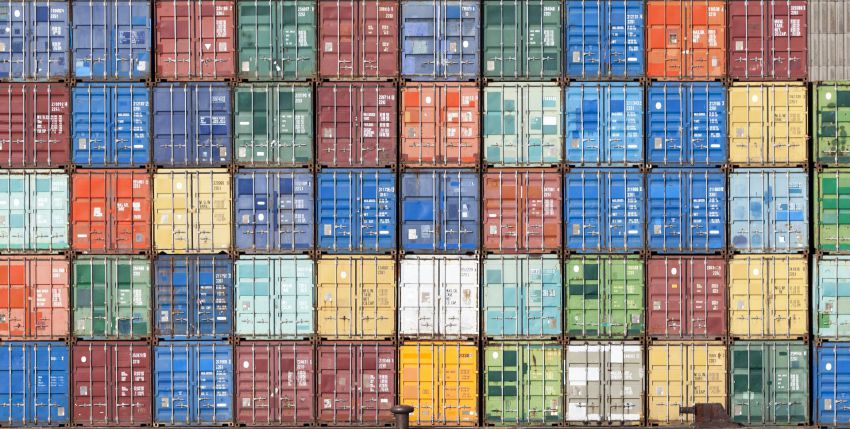- Rent, Lease, or Purchase
- |
May 11, 2021
12 Types of Shipping Containers You Should Know

Estimates hold that there are over 17 million shipping containers in use around the world. These units will make a total of 200 million trips a year, transporting some 11 billion tons of product. When working with that kind of volume, it's essential to ensure your goods arrive safely.
Different types of shipping containers exist to accommodate the contents they contain. Heavy loads, for instance, are transported using different container types than perishable or liquid items. Containers may vary in terms of size, material, and construction. Check out the list below to learn more about the most common shipping container types and uses.
The 12 Most Popular Types of Shipping Containers
1. General Purpose Containers

Also known as "dry containers," general purpose containers remain the most common type of shipping container in use today. These standard shipping units are fully enclosed to protect their contents from the elements, with a rigid roof, sidewalls, and floor.
A general-purpose container does not require temperature control but may include certain adaptations like liner bags or flexitanks for bulk cargo.
2. Flat Rack Containers

A flat rack container is best suited for heavy cargo that needs to be loaded from the top of the sides. These are collapsible containers that come with or without walls. Flat rack containers can accommodate heavy loads, including construction equipment, building supplies, or heavy machinery.
3. Open Top Containers

Open top containers are typically used for over-height cargo. These storage containers have removable bows instead of a solid roof to make loading and unloading bulky cargo more manageable. Open top containers container lashing rings installed to the upper and lower side rails and corner posts to secure cargo. They also contain a convertible top that can be secured with ropes.
4. Open Side Storage Containers

An open side storage container opens on the side as opposed to the end to make loading and unloading cargo even easier. This provides enough room for large items that are unable to fit through the end doors. Other than these, these types of shipping containers are very similar to regular, general-purpose containers.
5. Refrigerated ISO Containers (Reefer Containers)

Also known as a reefer container, a refrigerated ISO container should be used to transport perishable substances over long distances. ISO containers are usually made from a type of weathering steel known as Corten steel.
6. Insulated and Thermal Containers

These types of containers contain a regulated temperature control that allows them to maintain higher temperatures. This allows them to keep goods warmer when transporting them over long distances.
7. Double Door Containers (Tunnel Containers)

Sometimes called a tunnel container, this kind of shipping container is designed with doors on both ends for quick loading and unloading.
8. Swap Bodies Containers

Swap bodies containers are typically used outside of the United States and are not made according to ISO standards. These exchangeable shipping containers can be used for either road or rail transport. They contain foldable legs, a strong bottom, and a convertible top.
9. Half Height Containers

Half-height containers are ideal for transporting bulk cargo that is heavy and dense. Their low center of gravity makes them better at handling heavy loads such as sand, gravel, coal, etc. This container type is made of mostly steel.
10. High Cube Containers

A high cube container is similar to dry shipping containers but taller by about one foot. High cube containers are ideal for when a slightly larger volume capacity is needed.
11. Tank Containers

This container type is designed to handle primarily liquid materials. It is typically constructed of strong steel and other anti-corrosive materials to better protect the materials it is transporting.
12. Drum Containers

These circular shipping containers can be made out of a variety of materials like steel, lightweight metals, fiber, and hard plastic. They are typically used to transport liquids or granular materials.
Shipping Containers Conditions
Shipping containers don't just vary by use; they can also be broken up based on the condition they're in. Apart from new shipping containers, there are generally three types to consider: one-trip, used, and purpose-built containers. Check out the information below for details.
One-Trip Shipping Containers: Just as the name suggests, a one-trip shipping container has made just one trip across the ocean. They are used to transport cargo just one time, then they are either sold or discarded. Their limited use helps preserve their condition, which is why they are often marketed as "as good as new."
Used Shipping Containers: Also known as recycled containers, these units have spent up to 15 years on ships helping conduct international trade. Having traveled around the world, these containers boast a fair amount of wear-and-tear. Compared to one-trip containers, they have larger dents, more rust, and patchy floors. Though more affordable, they can be challenging to repurpose.
Purpose-Built Shipping Containers: These containers are custom-built to fulfill specific purposes outlined by the buyer. Though they appear similar to ISO containers, their dimensions differ from standardized sizes. These types of containers are notoriously expensive but worth the price if the buyer requires specifications that cannot be provided by standard units.
Shipping Container Sizes
Standard shipping containers come in a range of sizes, the most common being 10 feet, 20 feet, and 40 feet with an internal width of eight feet. High cube containers are taller by about a foot, measuring around nine feet six inches.
There are three different weights to consider: the tare weight, or the amount it weights without cargo, the gross weight, or the maximum total weight and the payload, to the weight of the cargo. You can usually find these specifications painted on the outside of the container doors.
Click here for more information on shipping container dimensions.
Shop Shipping Container Solutions with Mobile Modular Portable Storage
Mobile Modular Portable Storage is a trusted rental partner for your commercial space needs. We provide a variety of storage container solutions in industries including construction, industrial, petrochemical, healthcare, education, government, and more. Our selection of rental conex boxes includes portable storage containers, portable offices, and office and storage combos.
Frequently Asked Questions
How many types of shipping containers are there?
There are over 15 different varieties of shipping containers, the most popular being dry storage containers, flat rack containers, ISO containers, and tanks.
How many different sizes of containers are there?
Mobile Modular Portable Storage offers four different sizes of containers: 10ft, 20ft, 24ft, and 40ft.
How much does it cost to buy a shipping container?
The cost of a shipping container depends on its condition and past use. Mobile Modular Portable Storage is proud to offer our storage solutions at affordable prices. Visit our website to get a quote.
Related Blogs



Subscribe to Our Blog
Enter your email address to subscribe to the blog and receive the notification of new posts by email.
Thank You for Subscribing to Our Blog!
Stay tuned for upcoming emails with valuable content that we hope will enhance your experience with our brand.
Both Pardot and mg360 form submissions failed.
